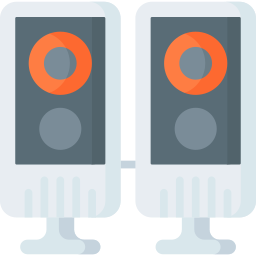
Internal Speakers in Laptop Hardware Components
Internal speakers are an integral part of laptop hardware, designed to output audio directly from the device without requiring external sound equipment. These speakers are small, embedded components located within the laptop chassis, usually near the keyboard or at the sides. Their primary function is to provide sound for various multimedia applications, system alerts, and communication tools, making them essential for an all-in-one portable computing experience.
Uses and Applications of Internal Speakers
Internal speakers serve a variety of purposes in everyday laptop use. They deliver audio for media playback, including music, movies, and online videos, enhancing the entertainment experience. During video conferences or calls, internal speakers provide clear sound output for voices, enabling effective communication. They also play system sounds such as notifications, warnings, and alerts, which are critical for informing users about software statuses or hardware events. Internal speakers facilitate gaming by outputting sound effects and background music, contributing to immersive gameplay. Additionally, they are used in educational software and e-learning platforms to deliver audio instructions and feedback. For presentations and demonstrations, internal speakers allow the laptop to serve as a standalone device without the need for external sound systems. In some cases, they support accessibility features by providing audio cues and spoken feedback to assist users with disabilities.
Technical Characteristics of Internal Speakers
Laptop internal speakers vary in size and quality depending on the model and manufacturer. They are typically small drivers designed to fit within limited space constraints, which impacts their audio range and loudness. Most internal speakers produce midrange and high-frequency sounds adequately but may lack deep bass due to physical limitations. Many laptops include stereo speakers to provide a sense of directionality and richer audio. Advances in technology have led to improved sound clarity and volume in modern internal speakers, sometimes supplemented by software enhancements like equalization and virtual surround sound. The speakers connect directly to the laptop’s sound card or integrated audio chipset, which processes audio signals and sends them to the speakers. Internal speakers rely on the laptop’s power supply and are optimized for low energy consumption to maintain battery life.
Free vs Paid Use of Internal Speakers
Using internal speakers to listen to audio is inherently free after the purchase of the laptop hardware. There is no additional cost specifically for the speakers themselves, as they are part of the built-in system. Audio playback through internal speakers does not require subscription fees or licenses. However, certain software applications that provide advanced audio processing, enhancements, or professional-grade sound control may require payment. The basic functionality of internal speakers is universally accessible through the operating system’s audio drivers and standard media players without extra charges. While no direct cost applies to the hardware use, users who desire higher-quality sound or specialized features might invest in external speakers or headphones, which come with their own prices.
Comparison with External Speakers and Headphones
Internal speakers offer the convenience of immediate, integrated sound without the need for additional devices. They are always available as long as the laptop is powered on, making them ideal for on-the-go usage. However, compared to external speakers or high-quality headphones, internal speakers generally provide lower audio fidelity. External speakers can produce a broader range of frequencies, deeper bass, and louder volumes, significantly enhancing the listening experience in environments like home offices or entertainment setups. Headphones, particularly noise-canceling or studio-grade models, offer superior sound isolation and clarity, preferred by audiophiles and professionals. Internal speakers are limited by their physical size and placement, which can cause audio distortion or muffling in some laptops. External audio devices often include advanced features such as surround sound, enhanced bass, or wireless connectivity that internal speakers cannot match.
Conclusion
Internal speakers are a fundamental component of laptop hardware, delivering convenient and immediate audio output for a wide range of uses including multimedia playback, communication, and system notifications. Their integrated nature ensures that users always have access to sound without relying on external devices. The use of internal speakers is free beyond the initial hardware purchase, although enhanced audio experiences may require additional paid software or accessories. While internal speakers provide sufficient audio quality for casual and everyday tasks, they cannot compete with the superior performance of external speakers or headphones. Nevertheless, their presence adds significant value to laptops by making them complete, portable computing systems capable of independent audio output.












